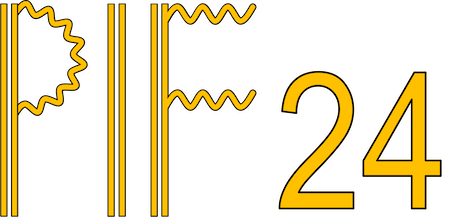Speaker
Description
We present a newly developed method for describing dynamical Sauter-Schwinger process using the S-matrix approach and reduction formulas [1]. The method is based on solving the Dirac equation with Feynmann or anti-Feynmann boundary conditions [2]. It leads to spin-resolved (helicity-resolved) probability amplitudes of produced electrons and positrons. With this approach, after summing up over spin (helicity) configurations, we are able to reproduce
the momentum distributions of particles calculated with other methods used in this context, such as the Dirac-Heisenberg-Wigner approach. Our method, however, provides access to
the information about the probability amplitude phase, which allows us to investigate vortex structures in pair creation [3]. In addition, we gain the information about the electron and
positron spins (helicities), which makes it possible to study their correlations.
[1] M. M. Majczak, K. Krajewska, J. Z. Kamiński, and A. Bechler, Scattering matrix approach to dynamical Sauter-Schwinger process: Spin- and helicity-resolved momentum distributions, arXiv:2403.15206 (2024).
[2] I. Białynicki-Birula and Z. Białynicka-Birula, Quantum Electrodynamics (Pergamon, Oxford,1975).
[3] A. Bechler, F. Cajiao Vélez, K. Krajewska, and J. Z. Kamiński, Vortex Structures and Momentum Sharing in Dynamic Sauter–Schwinger Process, Acta Phys. Pol. 143, S18 (2023).

